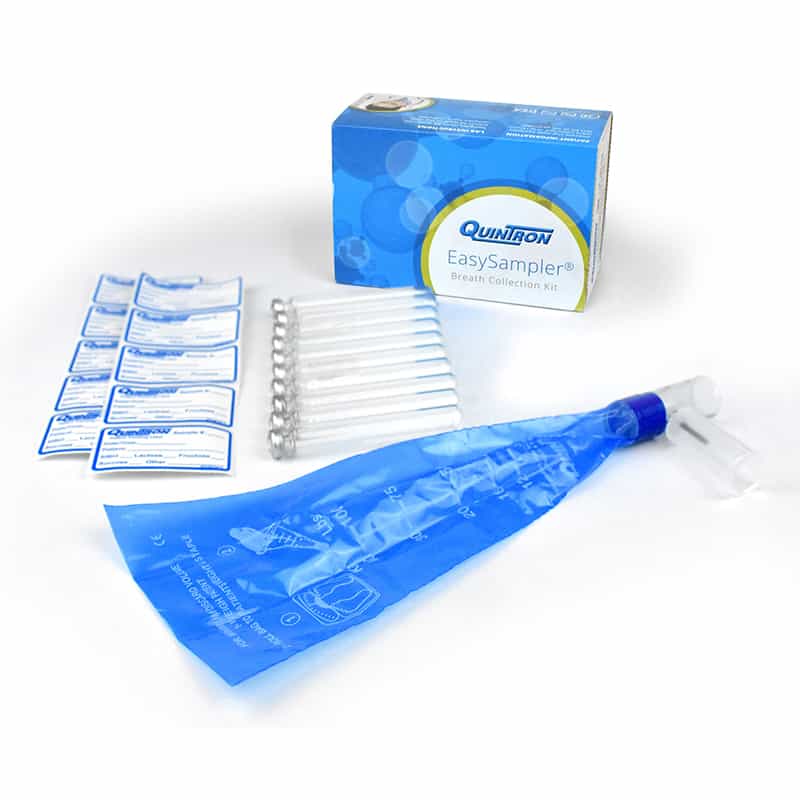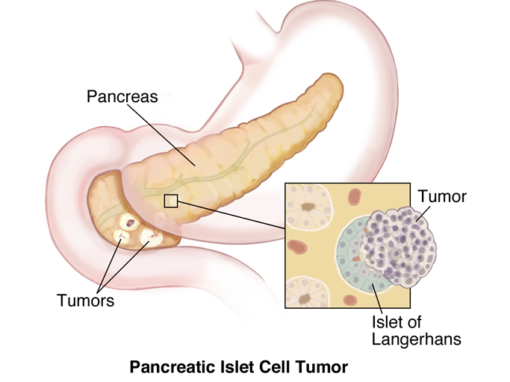SIBO significa sobrecrecimiento bacteriano del intestino delgado y ocurre cuando las bacterias normales terminan viviendo en cantidades excesivas en el intestino delgado, causando estragos. Se estima que, en promedio, el 60 % de todos los síndromes del intestino irritable en realidad son causados por SIBO, y hasta el 84 % de los pacientes con SII tienen SIBO. en un estudio. Puede leer más sobre SIBO en nuestro Lo que necesita saber sobre SIBO artículo. En este artículo, analizamos qué es una prueba SIBO, cómo hacerse la prueba y cuándo debe considerar volver a realizar la prueba.
Una vez que experimente hinchazón, diarrea, estreñimiento, dolor abdominal o cualquier síntoma de SIBO, es importante realizar una prueba de SIBO. SIBO puede ser una condición crónica ya menudo complicada de tratar. Entonces, antes de comenzar cualquier tratamiento, es importante hacerse una prueba primero. Esto se debe a que queremos saber si SIBO está causando sus síntomas y, de ser así, qué tipo de SIBO tiene.
La buena noticia es que hay varias formas de hacerse la prueba de SIBO:la prueba de aliento SIBO y el aspirado yeyunal.
Si tiene SII , problemas estomacales crónicos, enfermedad celíaca, enfermedad de Crohn o colitis ulcerosa, es posible que desee considerar hacerse la prueba de SIBO. Hay una gama de opciones de tratamiento disponibles para SIBO , e identificar su presencia abre las opciones de alivio de sus síntomas asociados. La buena noticia es que hay un par de formas diferentes de hacerse la prueba, que exploramos a continuación.
Actualmente, SIBO se puede evaluar mediante varios métodos, incluida la prueba de aliento y el aspirado yeyunal.

Una prueba de aliento SIBO no es invasiva, es fácil de hacer, se puede hacer en casa o en una clínica y es el método más común para probar SIBO. Funciona midiendo el hidrógeno y/o el metano en el aliento a intervalos de tiempo específicos, durante un período de tiempo, después de que una persona bebe una solución de azúcar (lactulosa o glucosa). Puede realizar este cuestionario en línea gratuito para determinar la probabilidad de que SIBO esté presente antes de ordenar una prueba.
Una persona se considera positiva para hidrógeno SIBO si tiene un aumento de 20 ppm (partes por millón) sobre el valor anterior más bajo dentro de los primeros 100 minutos.
Una persona se considera positiva para metano SIBO si tiene un aumento de 12 ppm sobre el valor anterior más bajo dentro de los primeros 100 minutos.
Si el aumento se produce durante 100-120 minutos para el hidrógeno o el metano, se considera un resultado límite.
Algunos pacientes experimentan niveles basales altos. Algunos médicos interpretan esto como un resultado positivo de la prueba. Con metano SIBO, esto es particularmente cierto ya que una línea de base alta y un aumento temprano es un patrón de metano estándar. Se puede indicar una preparación inadecuada cuando los niveles de gas caen después de una línea de base elevada y continúan reduciéndose o permaneciendo bajos durante las primeras dos horas.
Se debe cumplir con lo siguiente para que los resultados de la prueba de aliento SIBO sean confiables.
Un mes antes: Sin colonoscopias, estudios con bario, colónicos ni uso de antibióticos.
Una semana antes: Suspenda todos los probióticos, productos que contengan probióticos (p. ej., yogur, alimentos fermentados), antimicrobianos a base de hierbas.
Un día antes: Suspenda los laxantes, ayudas digestivas (por ejemplo, enzimas, ácido clorhídrico), suplementos no esenciales. Siga la dieta de preparación y el ayuno de 12 horas.
Se debe seguir una dieta simple que sea baja en carbohidratos fermentables y fibra 24 horas antes del comienzo de la prueba. Si una persona está estreñida, debe seguir la dieta durante 48 horas.
Cada laboratorio tiene alimentos permitidos ligeramente diferentes, pero generalmente incluyen huevos, pescado blanco, pollo, pavo, arroz blanco, queso curado, huevos, caldo claro de carne (hecho sin huesos y vegetales), aceite de oliva y aceite de coco para cocinar, sal y pimienta para sazonar, té negro suave y café y agua corriente. Si no recibe instrucciones dietéticas antes de la prueba, se recomienda que se comunique con el centro para confirmar lo que requieren para no sesgar los resultados sin darse cuenta.
Además de la dieta, se requiere un ayuno de 12 horas inmediatamente antes de la prueba para permitir que la comida transite por el intestino delgado y lo deje relativamente vacío.

Las 24 horas previas a la prueba podrían verse así:
Día 1:
7 a.m.: Huevos revueltos con una taza de café o té negro suave.
10:00: Taza de caldo de carne tibio.
13:00: Filete de pescado a la plancha con arroz jazmín o basmati.
16:00: Taza de sopa a base de caldo de carne y arroz jazmín o basmati.
19:00: Pollo a la plancha con arroz jazmín o basmati.
19:30 - 07:30: Sin comida. Solo agua.
Día 2:
6.30 am hasta el final de la prueba: No fumar (o humo de segunda mano), no hacer ejercicio, no dormir. Puedes cepillarte los dientes con normalidad.
7:30 - 10:30: Prueba de aliento SIBO. Se pueden beber pequeñas cantidades de agua corriente durante la ventana de prueba.
10:30 en adelante: Vuelva a comer normalmente.
"Hacer una prueba de aliento SIBO me dio tranquilidad. Obtener un diagnóstico de SIBO significó que finalmente supe qué estaba mal con mi intestino. Mi médico tenía un plan y comenzamos tratamiento inmediato. Por fin, estaba en el camino de la recuperación de mis síntomas intestinales debilitantes.
Rebeca Coomes
La prueba de aliento SIBO ha brindado a personas de todo el mundo la oportunidad de obtener respuestas sobre lo que sucede en sus intestinos.

Fácil de hacer






















Asequible






















Relativamente rápido de hacer (3 horas)






















Obtenga resultados rápidamente






















Prueba de diagnóstico SIBO más común






















Puede diagnosticar SIBO de hidrógeno y metano






















No apto para personas que no pueden soplar en un tubo






















No se puede diagnosticar sulfuro de hidrógeno SIBO






















La solución de azúcar puede empeorar los síntomas temporalmente






















La lactulosa es un artículo recetado en los EE. UU.






















Glucose only measures SIBO in first 3 feet of small intestine






















Requires proper preparation, fasting for 12 hours and 3 hours to do the test






















May provide false negative and false positive results in some patients due to improper preparation or other conditions affecting gut transit time
Want to learn more about SIBO breath testing? Listen to my podcast interview with Eric Hamilton from QuinTron Instrument Company, the leading manufacturers of the SIBO breath testing equipment.
An aspirate can be taken from the second part of the small intestine. This can be performed by an endoscopy in-clinic, generally under anaesthesia or sedation. A sample is taken and the culture is grown to determine what bacteria are present.
Esta prueba es invasiva, costosa y difícil de encontrar porque requiere un profesional médico altamente calificado para realizar la prueba. Por estas razones, no se usa comúnmente.
It can also produce false-negative results if the bacterial overgrowth is further down the small intestine, where the sample hasn't come from, if the sample size was too small, or if the bacteria that was collected can't be cultured.
Your doctor's office will have specific instructions for preparing for a jejunal aspirate, but they may be similar to the SIBO breath test prep.






















Considered gold standard by some practitioners






















Invasive






















Expensive






















Requires sedation or anaesthetic






















Time consuming






















Requires a gastroenterologist to perform procedure






















Greater risks as a medical procedure






















Can produce false negative and positives results
Stool testing can be very informative about a person's large intestine health and their broader GI health. It can show if there are imbalances or pathogenic organisms. However, it cannot diagnose SIBO as by its very nature, the stool test cannot determine where the bacterial overgrowth is occurring. The overgrowth could be from the large intestine, the small intestine or both.
If it is not possible for a person to undertake a breath test, such as for very young children who cannot blow into a tube, this can be a good indicative starting point until a breath test can be taken.
Las bacterias y los hongos producen ácidos orgánicos que se excretan en la orina. A urine organic acids test measures the level of organic acids that you have excreted, giving you an indication that you may have a yeast or bacterial overgrowth somewhere in your body.
Sin embargo, al igual que la prueba de heces, no puede señalar exactamente dónde the overgrowth is occurring, and for this reason, cannot be used to definitively diagnose SIBO.
Researchers and breath test manufacturers are working on a commercially suitable test for Hydrogen Sulfide SIBO, which should be available in the coming years. There may also be exciting developments with the use of smart devices, which are swallowed and can take samples along the entire length of the small intestine tract.
A positive SIBO test means you either have hydrogen, methane, or suspected hydrogen sulfide SIBO. The next step is to find a practitioner who is experienced in treating SIBO. A SIBO specialist will recommend a course of treatment based on what SIBO you have, what type of treatment you feel most comfortable with and what they clinically see delivers the best results. There are 3 current SIBO treatment protocols:antibiotics, herbal antimicrobials and the Elemental Diet.
Some patients only need to do one of the three treatment options to recover from SIBO. However, for two-thirds of people, SIBO is a chronic, recurring condition and multiple rounds are required of one or all three of the available treatments.
Remember, no two people are the same. We’re all on different journeys so you need to make sure that you’re with the right practitioner who helps you to understand your condition, and who has the expertise and a depth of knowledge required to treat SIBO.
If, after a round of treatment, you don't feel a noticeable improvement, then it may be worth considering re-testing for SIBO. This can provide your practitioner with useful information, such as whether the treatment was effective, which gas(es) is still present and what treatments should be utilised next.
However, it is important to remember that a person is more than their SIBO test results. How you feel is more important than what a test result says. If you feel better, that is a more important metric to hold onto. I have had many SIBO coaching clients who have tested positive for SIBO, yet feel remarkably better than when they first started treatment.
If you found this article on how to get tested for SIBO helpful, I would love to hear your thoughts. Simply leave a comment in the comments section below.
"I have chronic, relapsing SIBO. I listen to my body and let it guide me with symptoms. I re-test for SIBO on occasion when I want information on whether I have hydrogen, methane or both, what my gas levels are like, and what treatment I need to consider. I let my body tell me how I am actually feeling, not a test result.
Rebecca Coomes
Pin1383 Shares Cómo empezar con la dieta baja en FODMAP
Cómo empezar con la dieta baja en FODMAP
 Tumor neuroendocrino pancreático (PNET)
Tumor neuroendocrino pancreático (PNET)
 Cáncer de colon:síntomas, factores de riesgo, tratamiento y prevención
Cáncer de colon:síntomas, factores de riesgo, tratamiento y prevención
 receta suculenta de pollo asado con limón y tomillo
receta suculenta de pollo asado con limón y tomillo
 Enfermedades digestivas:acidez estomacal y enfermedad por reflujo gastroesofágico (ERGE)
Enfermedades digestivas:acidez estomacal y enfermedad por reflujo gastroesofágico (ERGE)
 ¿Todas las enfermedades comienzan en el intestino?
¿Todas las enfermedades comienzan en el intestino?
 5 mitos sobre la colonoscopia desacreditados:Edición COVID-19
La salud intestinal es importante, pero cierta información errónea se ha infiltrado en nuestra cultura con respecto a lo que es normal para la salud gastrointestinal. Por lo tanto, nuestros gastroente
5 mitos sobre la colonoscopia desacreditados:Edición COVID-19
La salud intestinal es importante, pero cierta información errónea se ha infiltrado en nuestra cultura con respecto a lo que es normal para la salud gastrointestinal. Por lo tanto, nuestros gastroente
 El microbioma pulmonar predice la gravedad de la enfermedad COVID-19
Un nuevo trabajo de investigación preimpreso publicado en el medRxiv * El servidor encontró cambios en el microbioma pulmonar durante la infección por coronavirus 2 (SARS-CoV-2) del síndrome respira
El microbioma pulmonar predice la gravedad de la enfermedad COVID-19
Un nuevo trabajo de investigación preimpreso publicado en el medRxiv * El servidor encontró cambios en el microbioma pulmonar durante la infección por coronavirus 2 (SARS-CoV-2) del síndrome respira
 Ray Manzarek muere de cáncer de las vías biliares
Venice Beach, California, 1965. Por suerte, Ray Manzarek se encuentra con Jim Morrison, un excompañero de UCLA, y el mundo es bendecido con la música de The Doors. La banda vende 100 millones de álbum
Ray Manzarek muere de cáncer de las vías biliares
Venice Beach, California, 1965. Por suerte, Ray Manzarek se encuentra con Jim Morrison, un excompañero de UCLA, y el mundo es bendecido con la música de The Doors. La banda vende 100 millones de álbum